
Erich Brauer was a German Jewish illustrator, ethnographer, and ethnologist. As an artist he chose to be known as Erich Chiram Brauer. He often signed his art work "Chiram".

Abraham Moses Luncz was a Russian scholar and editor born at Kovno, Russia. At age 14 he came to Jerusalem. Luncz, who grew blind early in life, founded, in conjunction with Dr. Koisewski, an institution for the blind at Jerusalem.
Gershon Shaked (1929–2006) was an Israeli scholar and critic of Hebrew literature.
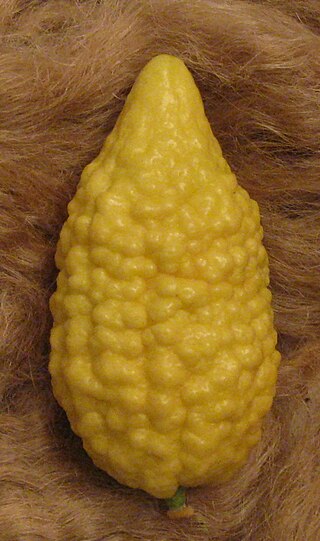
The balady citron is a variety of citron, or etrog, grown in Israel and Palestine, mostly for Jewish ritual purposes. Not native to the region, it was imported around 500 or 300 BCE by either Jewish or Greek settlers. Initially not widely grown, it was promoted and popularized in the 1870s by Rabbi Chaim Elozor Wax.

Givat Ram is a neighborhood in central Jerusalem. It is the site of Kiryat HaMemshala, which includes many of Israel's most important national institutions, among them the Knesset, the Israel Museum, the Supreme Court, Bank of Israel, Academy of the Hebrew Language, National Library, one of the campuses of the Hebrew University of Jerusalem, and many government ministries' offices.

Hanoch Albeck was a professor of Talmud at the Hebrew University in Jerusalem, Israel. He was a foremost scholar of the Mishna and one of the pioneers of the scientific approach to Mishna study.
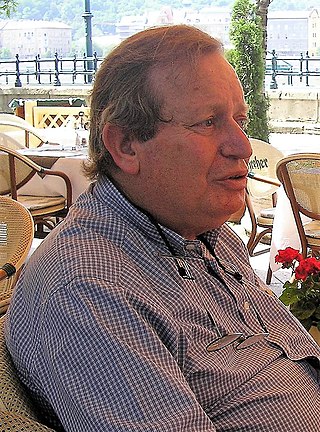
Israel Bartal, is Avraham Harman Professor of Jewish History, member of Israel Academy of Sciences (2016), and the former Dean of the Faculty of Humanities at Hebrew University (2006–2010). Since 2006 he is the chair of the Historical Society of Israel. He served as director of the Center for Research on the History and Culture of Polish Jewry, and the academic chairman of the Project of Jewish Studies in Russian at the Hebrew University of Jerusalem. Professor Bartal was the co-director of the Center for Jewish Studies and Civilization at Moscow State University. Bartal received his PhD from Hebrew University in 1981. He focuses his research on the history of the Jews in Palestine, the Jews of Eastern Europe, the Haskalah Movement, Jewish Orthodoxy and modern Jewish historiography.

Bank of Jerusalem, Ltd. is Israel's seventh largest bank, with total assets of 9,301 million shekels. Bank of Jerusalem is headquartered in Jerusalem and has 24 branches around the country.
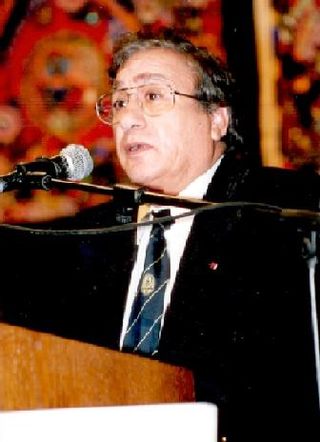
Shmuel Moreh was a professor of Arabic Language and Literature at the Hebrew University of Jerusalem and a recipient of the Israel Prize in Middle Eastern studies in 1999. In addition to having written many books and articles dealing with Arabic literature in general and Iraqi Jewish Arabic literature in particular, he has been a major contributor to Elaph, the first online daily independent journal in the Arabic language. Professor Moreh wrote in Arabic, Hebrew, and English.
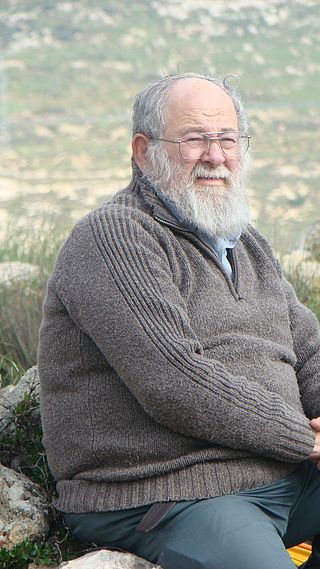
Ze'ev Safrai is an Israeli Professor in the Department for Israel Studies in Bar Ilan University, as well as an author, lecturer and researcher of Israel in the Second Temple era. His main project is his authorship of the socio-historical commentary to the Mishnah called Mishnat Eretz Yisrael, which he began together with his late father Professor Shmuel Safrai and his late sister Professor Chana Safrai.

Yad Ben Zvi, also known as the Ben-Zvi Institute, is a research institute and publishing house named for Israeli president Yitzhak Ben-Zvi in Jerusalem.
Yechiel Granatstein was a Polish-born Jewish author and writer in Yiddish and Hebrew, as well as a partisan fighter in World War II and a Jewish refugee activist following the Holocaust.

Samuel Klein was a Hungarian-born rabbi, historian and historical geographer in Mandatory Palestine.

Tarbiẕ is a quarterly academic journal of contemporary Jewish studies, humanities and religion. It is published in Hebrew by the Institute of Jewish Studies. The journal was established in 1930. Etymologically, the word "Tarbiz" means "place of dissemination of learning," particularly that related to an "academy," or "seat of learning." The editors-in-chief are Roni Goldstein, Moshe Halbertal, Shlomo Neah, and Sarit Shalu-Aini.

Rebecca Reuben Nowgaokar was a Jewish-Indian writer and educator. She was the director of the School Committee of the Bene Israel in Mumbai from 1922 to 1950.
Moshe"Moses" Lugassy was a Moroccan born British-Jewish businessman, a social activist and a Zionist leader. He was part of the Jewish circle of public influencers called "The Enlighted Hebrews" that had taken place in Morocco.
Devai Haser is a piyyut by Dunash ibn Labrat, whose first name is signed in the first verse by acrostic. Ashkenazi Jews incorporate the first stanza of the piyyut into the Birkat Hamazon for weddings and Sheva Brachot.
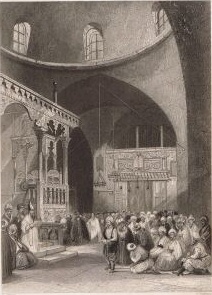
The Council of the Sephardi Committee or Sephardi Community Council was a Jerusalem-based committee which served as an unofficial governing body for the Sephardi Jewish community in the city prior to Israeli independence. The organization purchased property from donations and endowments, which were then made available to Jews in need of shelter and resources.
Uriel Rappaport was an Israeli historian. His area of research focus was the Second Temple period, including Hellenistic Judaism, the Maccabean Revolt, the Hasmonean kingdom, and the First Jewish–Roman War. He became a professor of Jewish History at the University of Haifa and served as a rector of the university from 1983 to 1985. He was a member of the Council for Higher Education in Israel in 1987–1989 and 1998–2001, and served as a chairman of the Humanities Committee at the Israel Science Foundation. Rappaport took emeritus status at Haifa in 2003, and served as president of Kinneret College in 2002–2006.

The First Wall is one of three strong and fortified walls that were built for the defense of Jerusalem during the Second Temple Period. This wall was built during the Hasmonean period, but its foundations are older and were laid already in the First Temple period. During the time of the Return to Zion, the wall was rebuilt by Nehemiah, and in the days of the Hasmoneans, it was strengthened and even additional parts of it were built. The additional walls are the Second Wall - built during the days of the Hasmonean rulers John Hyrcanus or Alexander Jannaeus, and the Third Wall - construction began in the days of Agrippa I, and its construction was completed on the eve of the Great Revolt.














